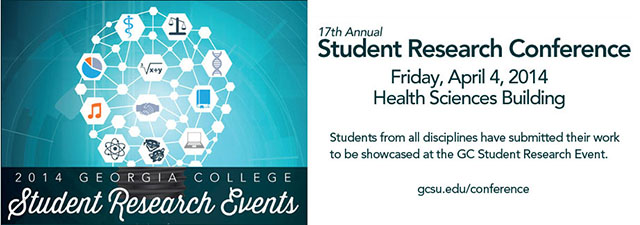
Event Title
Transport Propeties of Silver Nanoparticles in Saturated Media at the Lab Scale
Faculty Mentor
Samuel Mutiti
Keywords
Samuel Mutiti
Abstract
The use of nanotechnology and nanoparticles has seen a dramatic increase in society today. Their production and use can be found in the chemical, metallurgical, medical, food and clothing industries, among others. This increased usage has resulted in an increase in the presence of these particles in the environment. Based on their size and reactivity, nanoparticles are supposed to readily undergo sorption in groundwater systems. Very few studies have been conducted to determine the effects of these particles in the environment and their movement in groundwater. This study investigates the fate and transport of particles through saturated porous and fractured media. One, two and three dimensional lab models are utilized to determine the transport characteristics of nanoparticles through saturated media. The sediments are initially flushed and saturated with deionized water, followed by a nanoparticle standard (pulse flow). A combination of analytical methods is used to measure the concentration of the nanoparticles. Sorption isotherms are determined using inverse modeling and laboratory batch experiments. Preliminary results show a reduction in silver nanoparticles by two orders of magnitude. The first sorption results suggest a Langmuir isotherm for the silver nanoparticles. Other metal and fluorescence coated nanoparticles are also investigated.
Session Name:
Poster Presentation Session #1 - Poster #03
Start Date
4-4-2014 11:30 AM
End Date
4-4-2014 12:15 PM
Location
HSB 3rd Floor Student Commons
This document is currently not available here.
Transport Propeties of Silver Nanoparticles in Saturated Media at the Lab Scale
HSB 3rd Floor Student Commons
The use of nanotechnology and nanoparticles has seen a dramatic increase in society today. Their production and use can be found in the chemical, metallurgical, medical, food and clothing industries, among others. This increased usage has resulted in an increase in the presence of these particles in the environment. Based on their size and reactivity, nanoparticles are supposed to readily undergo sorption in groundwater systems. Very few studies have been conducted to determine the effects of these particles in the environment and their movement in groundwater. This study investigates the fate and transport of particles through saturated porous and fractured media. One, two and three dimensional lab models are utilized to determine the transport characteristics of nanoparticles through saturated media. The sediments are initially flushed and saturated with deionized water, followed by a nanoparticle standard (pulse flow). A combination of analytical methods is used to measure the concentration of the nanoparticles. Sorption isotherms are determined using inverse modeling and laboratory batch experiments. Preliminary results show a reduction in silver nanoparticles by two orders of magnitude. The first sorption results suggest a Langmuir isotherm for the silver nanoparticles. Other metal and fluorescence coated nanoparticles are also investigated.

